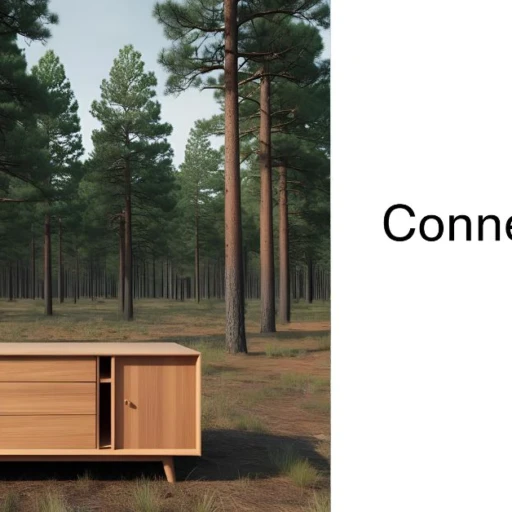Long ago, human beings learned that no matter where they live, the weather determines the architecture of their homes. It’s what protects us from the sun, rain, heat, and cold – our homes are our refuge. This principle is especially true in places with extreme weather. In extremely cold or desert climates, nature determines the building strategies, and the same is true of places where it is extremely humid and always hot.

In today’s article, we take a close look at the latter. Warm, humid, tropical areas are characterised by high temperatures no matter the time of day, as well as intense radiation, and frequent, abundant rainfall. The air can feel very heavy in these places.
That’s why architecture in these climates must follow three basic rules: be as lightweight as possible and provide lots of ventilation as well as protection from the sun without using thermal inertia. You read right. In this case, the latter bioclimatic approach is not seen as beneficial because the temperature varies very little over the course of the day and across the seasons, meaning there is no point in conserving heat and then releasing it. In fact, the opposite is true: it’s all about making sure indoor spaces are always cool and creating a special microclimate.
Ver esta publicación en Instagram
Bioclimatic architecture: adapting to wherever you live
Living in a place where the heat and humidity need to be taken into account means taking special care when it comes to how we build. The high cost of energy required for air conditioning and devices that reduce humidity levels mean that we need to consider circularity. Thankfully, intelligent architectural design doesn’t require a lot of additional technology. All you need is to know the specific limitations that nature imposes on the project, apply the right techniques and methods, and use resources available within the region. It’s all about adapting – an essential part of bioclimatic architecture.
Ver esta publicación en Instagram
What to consider: architecture in humid places
The more extreme the climate, the more limited the potential design solutions. Nevertheless, it is possible to work with what you’ve got. When building a home or other type of structure in a tropical area, many things need to be considered, including:
- Orientation and location: south-east facing buildings are ideal, along with having the main apertures along the north-south axis. This prevents heat conservation due to the solar angle of incidence in these regions and provides natural ventilation which reduces the humidity. Elevated locations are also recommended: they improve ventilation and, if the structure is off the ground (e.g., on stilts placed on pegs or pylons), the house will be exposed to breezes, in addition to being protected from floods as well as insects and other animals.
Ver esta publicación en Instagram
- Protection from the sun: Solar radiation, both direct and diffuse, should be avoided at all costs. This can be achieved with orientation as well as trees and other vegetation. There’s also the option of window coverings such as latticework, curtains, or Persian blinds, as well as painting the roof white. These approaches darken the large apertures in the home and reduce the amount of light and heat entering the space. Eaves and cantilevers can also be installed on the lower part of the roof to divert rainwater and provide shade outdoors, making them open galleries where we can rest and do activities while remaining protected from the sun and the rain.
Ver esta publicación en Instagram
- Cross-ventilation: This might be the most important aspect of architecture for these climates. Lots of ventilation is needed to cool the air which is why walls are removed whenever possible and replaced by moving panels, low walls, Venetian blinds or slatted elements that separate indoor and outdoor spaces. Large apertures in opposing walls are also used to make sure the air can flow without any obstacles.
Ver esta publicación en Instagram
- The roof should be lightweight to avoid trapping heat and consist of at least two superimposed layers with a ventilated air chamber between them. This is perhaps the most important structural element: it’s both a sunshade and an umbrella. Roofs in these locations are usually conical or pyramidal.
Ver esta publicación en Instagram
- Colour: the lighter the colour, the better, as it will reflect the sun’s rays more. You can choose from tropical shades, natural timber, sand, and of course, white.
The right materials for humid climates
The materials that should be used to build in warm, humid climates are similar to those used in warm, dry climates. These often include natural materials such as timber which is very durable and weather-resistant when it is adequately treated. It’s also a good thermal and acoustic insulator as it absorbs and expels humidity. Bamboo is another option. Homes in humid regions often built using a mixture of brick, plaster, cement, and concrete. Using insulation and sealants is also a must to make sure the structure doesn’t accumulate dampness.
Ver esta publicación en Instagram
Cob: an important technique for building in extremely humid conditions
Cob can refer to both a building system and the building material itself, which consists of mud, clay, sand, and straw. Thanks to its durability and weather resistance, it has been used to build houses since the Neolithic era.
Ver esta publicación en Instagram
Cob is not like adobe, as it doesn’t come in blocks or bricks, and is usually found in humid climates. Given its composition, you might think that frequent contact with rain would affect its stability, but the opposite is actually true. Cob is completely solid and can still be found in many European countries. It has recently become a viable alternative in ecological building.
Architecture on humid mountaintops: beyond the jungle and the tropics
Architecture and humidity don’t just co-exist in the jungle or the tropics. In fact, there are many examples to be found closer to Spain that are much older, too. The most unique is that of Venice, a heritage-protected city whose “acqua alta” (high tide) has caused more than a few headaches by raising the water levels of the canals and causing floods.
How was Venice built in these conditions? The city, located in north-eastern Italy, is made up of several small, natural islands in the Adriatic Sea and floats on a forest of tree trunks that are anchored to mud below the water and that were laid by hand over many years. The famed piloti consist of millions of three-metre-high pillars, each of which is fifty centimetres wide, placed side by side to form a platform that has been covered in stone blocks – a true feat of architecture and engineering.
These foundations are still standing today and by now, you might be asking how that is possible. Well, the lack of oxygen in the deepest layers of mud means the wood has not decomposed and the piloti have become petrified. Nevertheless, the city has sunk little by little over the years. The “acqua alta” leaves salt residue on the stones and bricks of the houses and this, along with the cruises along the canals, have resulted in water displacement that contributes to the city’s deterioration.
Make sure you read our series about architecture in extreme climates. Use the search bar above to find our other related posts.




